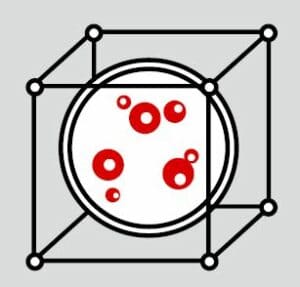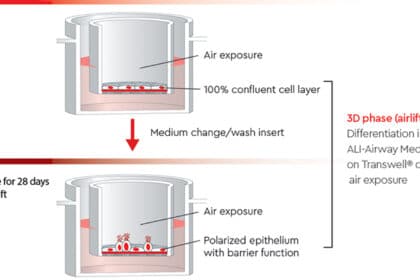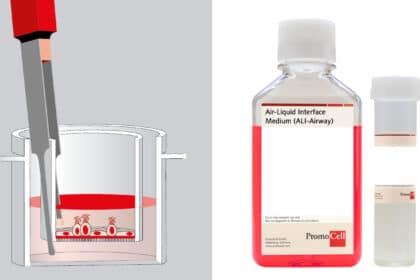Primary cells and respiratory research
Respiratory research involves a huge array of conditions from chronic and acute dysfunction to infectious disease. Airway disease is caused by a broad range of factors from lifestyle and environmental damage like smoking and air pollution to individual genetics and the microbial milieu of the lung. Certain diseases like tuberculosis are on the rise as bacteria become drug resistant, and as we’ve seen, new diseases such as coronavirus disease 2019 (COVID-19) represent a significant threat. The air liquid interface, as we will see below, is a unique biological niche requiring a cascade of processes to function correctly. The lung is an extremely large yet delicate surface, vulnerable to damage by infiltrating particles and pathogens. The body has developed a complex array of defense mechanisms to prevent this damage, and the cells responsible rely on those around them to carry out these duties.
Cell culture allows study of a life-like model of biological processes with the freedom to manipulate and therefore better understand them. Cell lines go some way towards studying these processes, but significant issues with contamination and misidentification mean research with them is losing credibility. Primary cells represent an increasingly popular means to gain replicable results that are representative of the in vivo environment but are not without their own challenges. Primary cells represent excellent models for studying respiratory disease in particular. Cell culture makes it possible to understand the mechanism of lung diseases at the cellular level and find useful targets within pathogenic processes.
The impact of respiratory disease
Respiratory disease has a huge impact on people’s lives around the world. It is one of the biggest causes of reduced quality and length of life and health costs globally. Below are some staggering facts and figures about the impact of respiratory disease from the European Respiratory Journal:

Key respiratory diseases
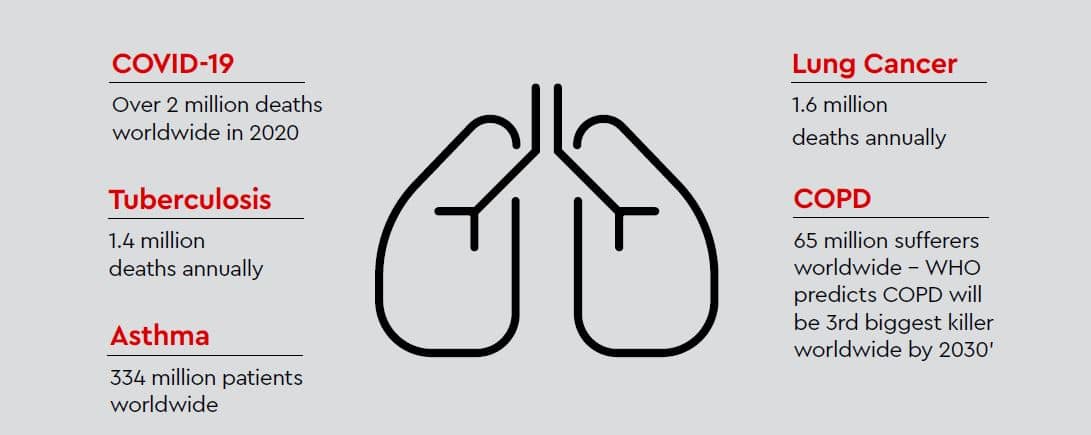
The use of cell lines in respiratory research
While cell lines represent the traditional means of studying lung disease, research using them is losing credibility due to significant issues with misidentification of cells used in research.

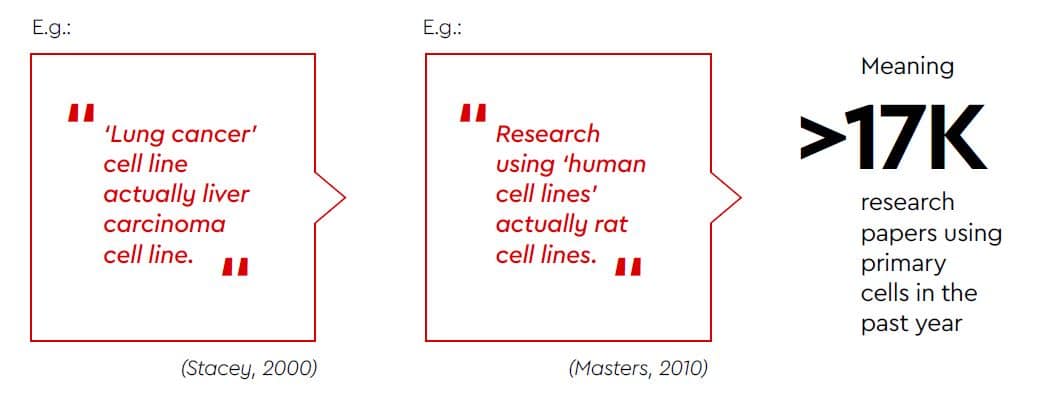
Benefits of using primary cells in respiratory research
Respiratory research benefits from primary cell research as this biological niche has a complex array of cells influencing and acting upon each other. 3D cell culture using primary cells from a disease specific donor allows understanding of in vivo processes in disease specific states, and comparison to healthy donor cells.
The challenges of primary cells are worth the potential benefits; replicable and accurate models mean time is saved on animal experiments or clinical trials based on inaccurate cell line results.
Learn more about the differences of primary cells and immortal cell lines in our blog article on this topic.
Challenges |
Advantages |
|---|---|
|
|
|
|
|
|
|
|
|
|
|
|
The challenges of primary cells are worth the potential benefits; replicable and accurate models mean time is saved on animal experiments or clinical trials based on inaccurate cell line results.
3D cell culture
A key benefit of primary cells is the ability to carry out 3D cell culture. Cells are trapped in a collagen gel matrix, replicating the in vivo scenario. Primary cells survive longer and act more like cells in vivo when cultured in a 3D environment.
E.g.: A 3D model of primary human adult lung cancer associated fibroblasts (LuCAFs) and human bronchial epithelial cells (HBECs) found HBECs are altered by LuCAFs via biochemical signals transferred through the biological matrix.
Air Liquid Interface (ALI)
The ALI is a unique cellular environment found in the respiratory system. To accurately study respiratory disease, cells must be in an environment which replicates this biological niche. High quality donor cells from disease specific donors are key to understand how the ALI is impacted by respiratory disease.
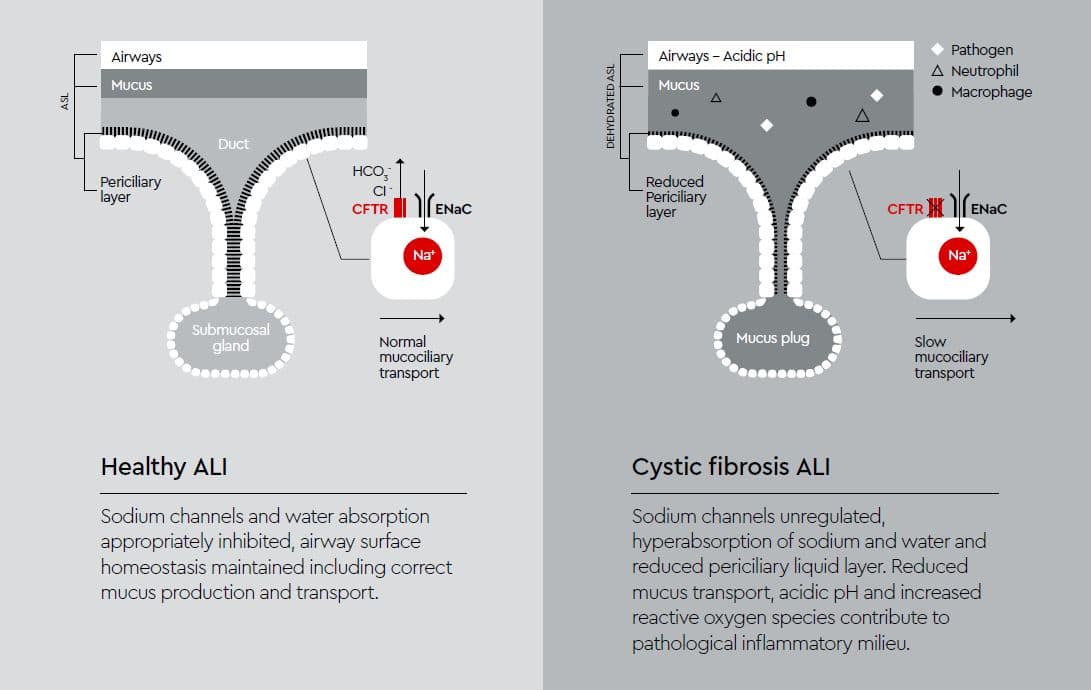
The problem |
The solution |
|
|---|---|---|
|
|
|
|
|
References
-
- https://www.ncbi.nlm.nih.gov/pmc/articles/PMC6276497/
- https://onlinelibrary.wiley.com/doi/full/10.1002/ijc.25242
- https://www.nature.com/articles/35000394
- https://www.who.int/gard/publications/The_Global_Impact_of_Respiratory_Disease.pdf
- https://journals.plos.org/plosone/article?id=10.1371/journal.pone.0186281
- https://www.europeanlung.org/assets/files/publications/lung_health_in_europe_facts_and_figures_web.pdf
- https://respiratory-research.biomedcentral.com/articles/10.1186/s12931-017-0680-0
- https://covid19.who.int/

